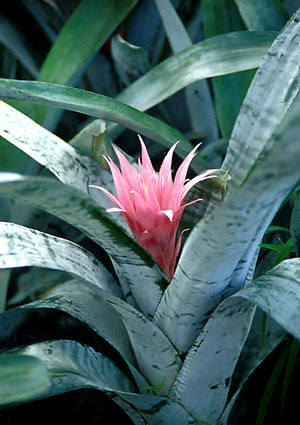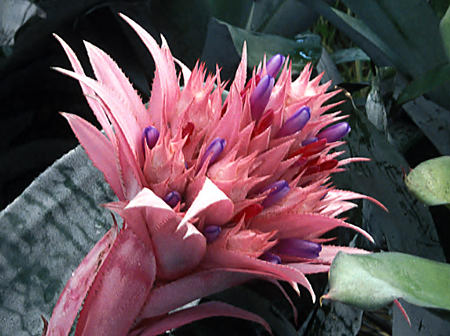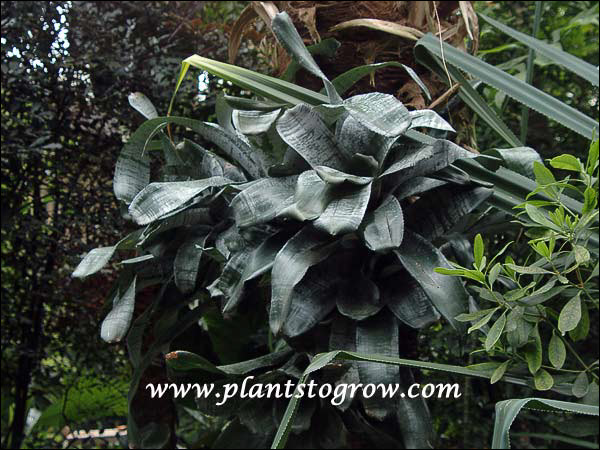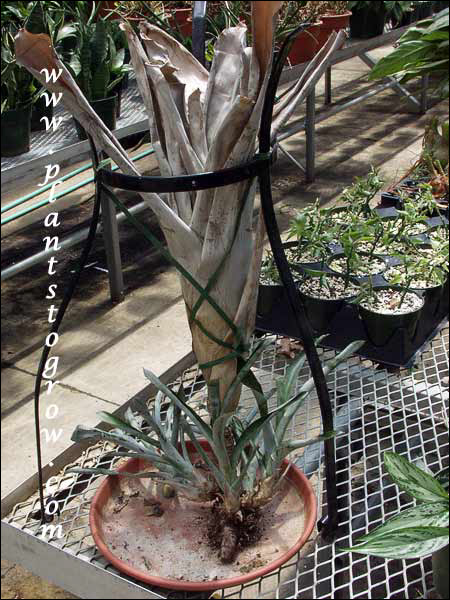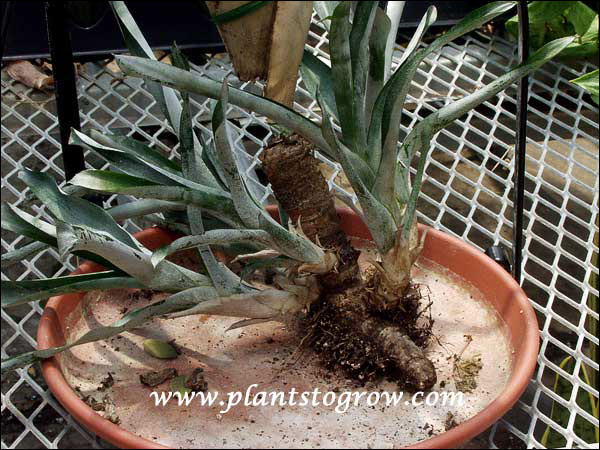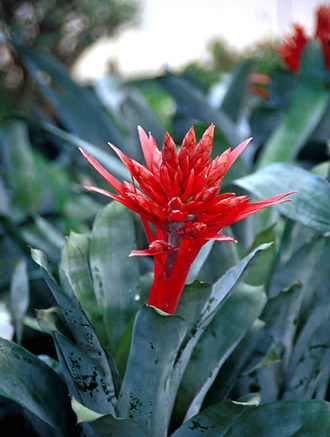| Description | Silver Vase Plant (Aechmea fasciata) is a vase-shaped epiphytic Bromeliad with pink flower inflorescence—one of the easier Bromeliads to grow. |
|---|---|
| Pronunciation | (eek-MEE-uh)(fass-ee-AY-tuh) |
| Plant Type | Indoor Foliage, Bromeliad, Perennial Tender, Site author's observations |
| Hardiness Zone | 10-11 |
| Sunlight | bright not direct |
| Moisture | evenly moist to approach dryness, keep the vase full of water |
| Growing Media | average house, epiphytic mix |
| Temperature | average house, warm, not less than around 58 degrees |
| Flowers | The colorful parts of a flower we often mistake for petals are modified leaves called bracts. The actual flowers are usually small and purplish and can be found extending out from the bracts. Once the central flowers in the center of the plant have bloomed, the plant will eventually die, and new shoots will grow from the sides—this process of dying after flowering is called monocarpic. |
| Leaves | The leaves create a vase that collects water and provides shelter for various animals in the wild. The chalky blue-gray color is a result of the overlapping scales that can easily flake off. |
| Dimensions | A medium sized plant, easily grown in 6"-8" pots. |
| Maintenance | The water in the vase should be changed periodically as it can become stagnant. Remove dead flowers that detract from the plant's appearance. |
| Propagation | Division is the easiest way. Can be grown from seeds |
| Native Site | Found growing in the mountainous rain forests of southern Brazil as an epiphytic plant (plants that grow in trees) |
| Misc Facts | Genus name "Aechmea" derived from the Greek word aichme (point) in reference to the spear-shaped leaves. |
| Author's Notes | I have been cultivating this particular plant for several years now, and I have found it to be quite low-maintenance. A former student of mine once praised this plant for being able to withstand missed watering, which makes it an excellent choice for commercial interior plantings. However, coaxing it to bloom again can be a bit tricky. For it to bloom again, the plant must be in an optimal growing environment and be mature enough. If it still doesn't bloom, you can try placing it in a plastic bag with a piece of ripe fruit for a week or so. The ethylene gas produced by the ripe fruit triggers flower formation and may help the plant to bloom again. |
| Notes & Reference | #18-House Plant Encyclopedia (Nico Vermeulen), "#171- Authors' observations and growing experiences " |

Cart
